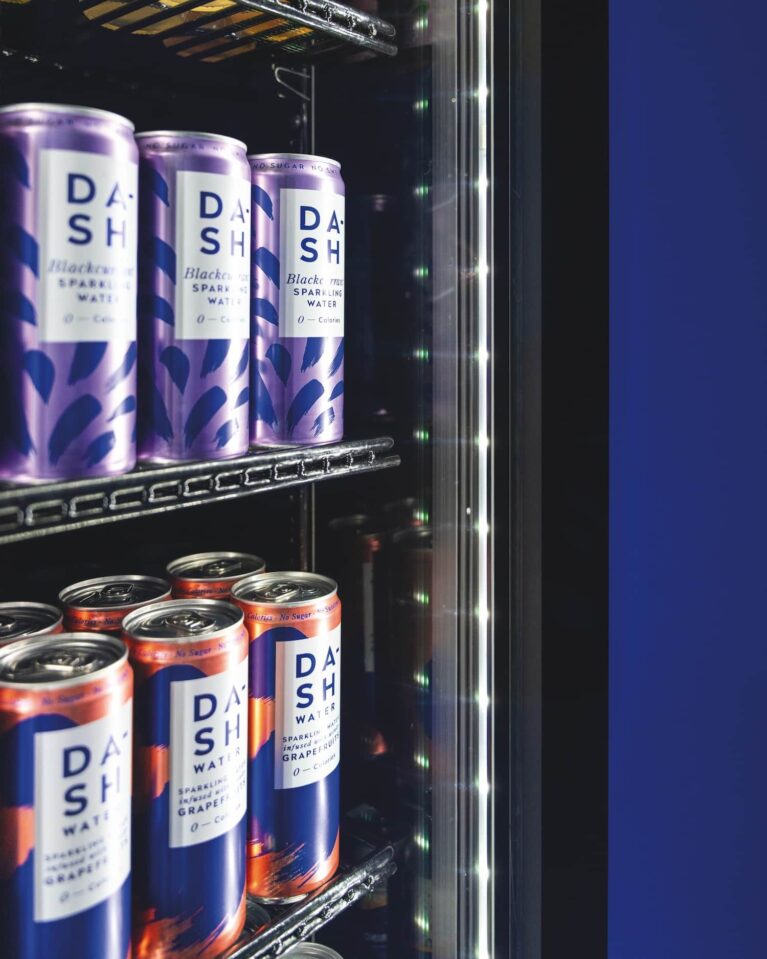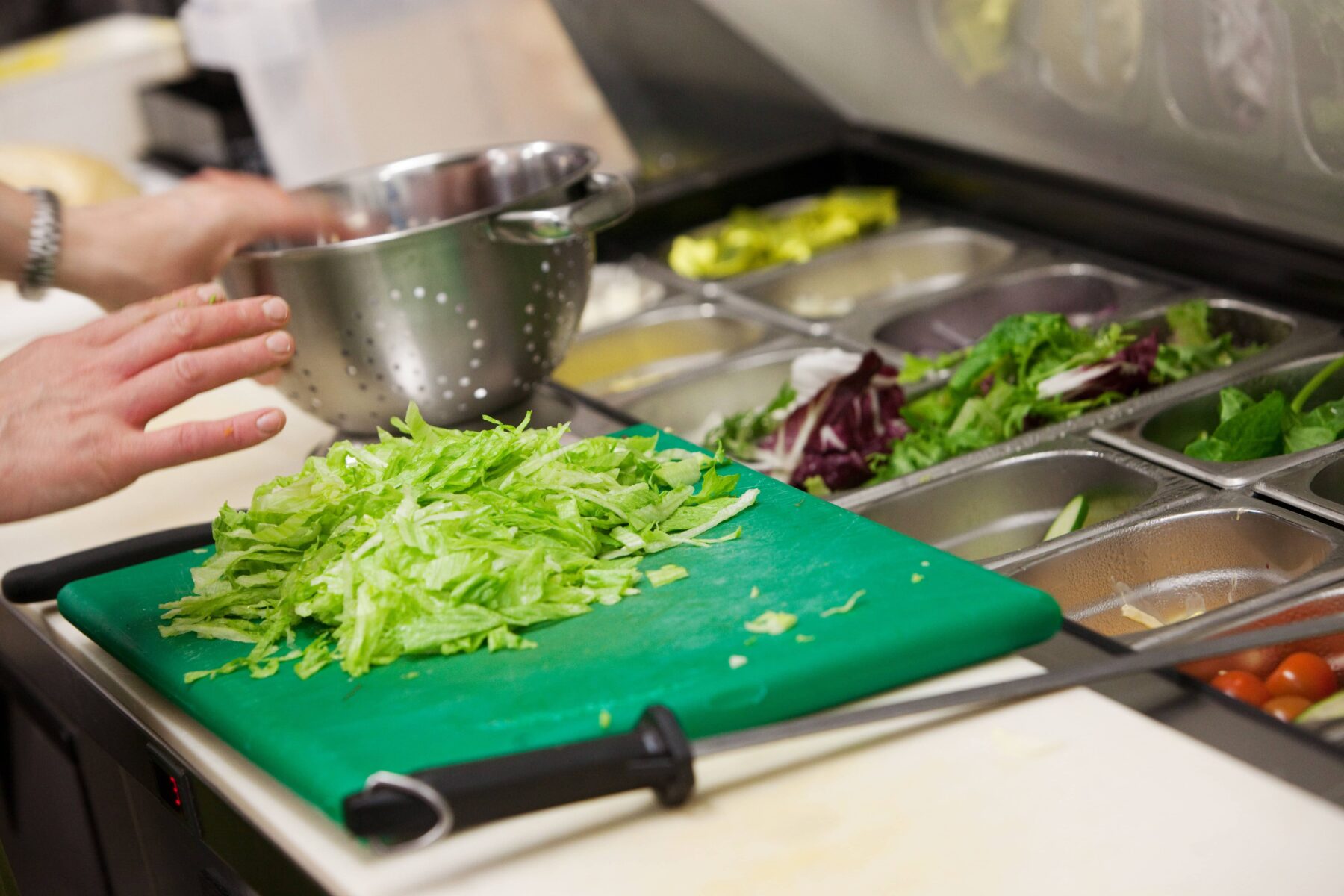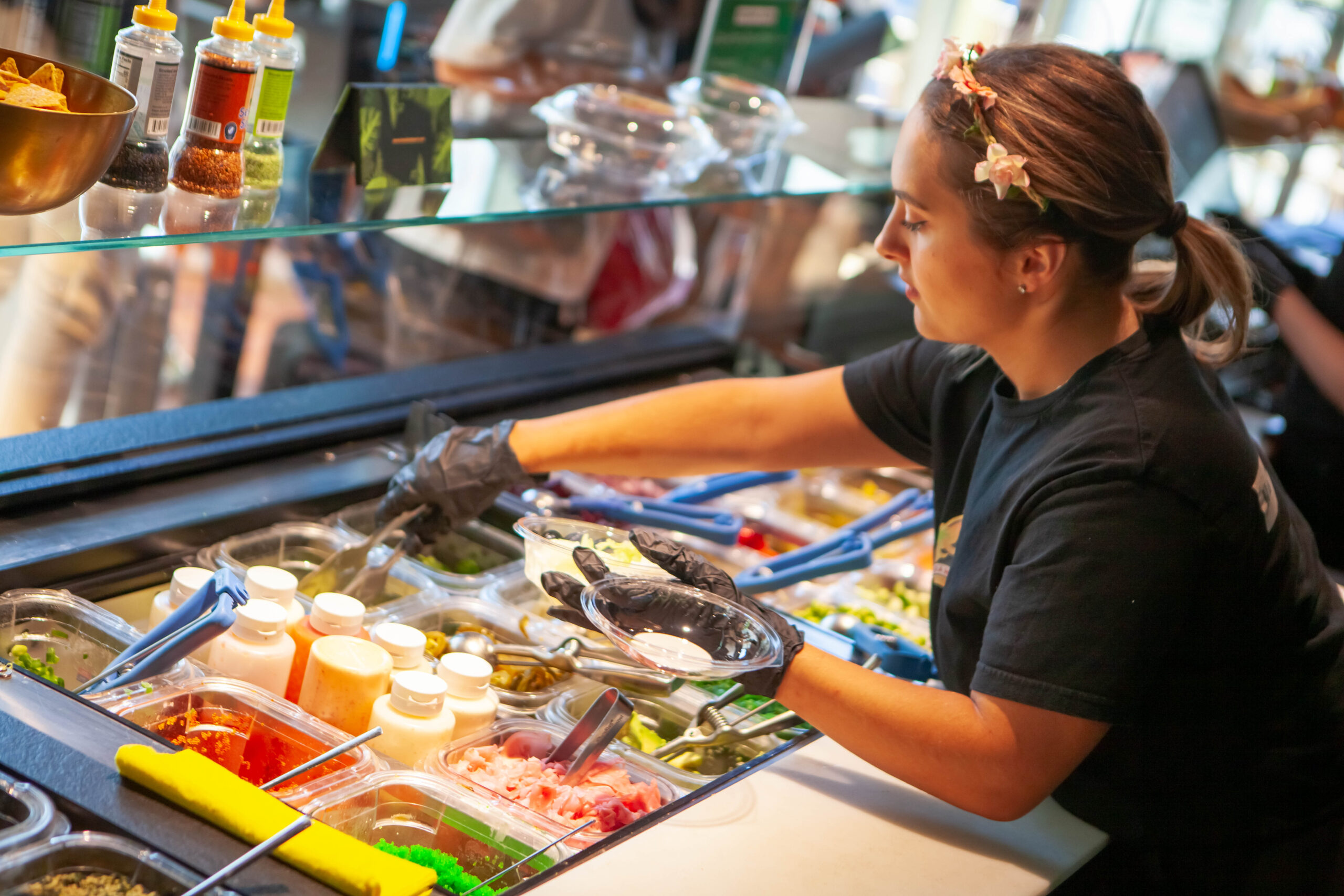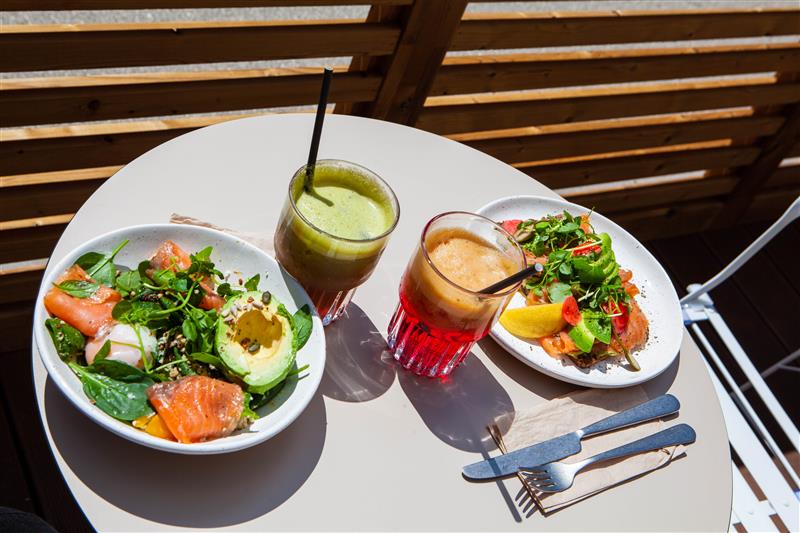True’s newest merchandiser is now available across Europe


Whether you’re preparing salads for peak season or year-round, maintaining the freshness and crispness of your ingredients is key.
Moisture is the enemy of freshness, and keeping your salad ingredients in top condition can be a challenge. Keep reading to discover some of our tips to make freshness last.
Maximise freshness with efficient equipment
Traditional methods like using a salad spinner and draining vegetables are effective, but investing in high-quality refrigeration units, such as True’s Prep Tables or T-series units, ensures optimal conditions for your ingredients. These units offer precise temperature control and high-density insulation, helping to preserve the texture and flavour of your salad components.
Keep greens cool with ideal storage conditions
Greens can wilt quickly if not stored properly. Store them in airtight containers to protect against moisture and humidity. Refrigeration units that maintain lower temperatures and reduce moisture buildup, such as those with insulated lids or coated evaporators, are essential for keeping your greens crisp and fresh.
Additionally, look for units with controlled humidity settings to further preserve freshness and prevent excessive moisture retention.
Prep efficiently to save time
By combining efficient prep features with reliable storage solutions, you can ensure salad ingredients are kept fresh from prep to plating, reducing waste and enhancing food quality.
True’s TSSU products, for example, offer ample space for prepping and storing ingredients simultaneously, improving workflow during busy services.
Additionally, TCR/F units provide high-capacity chilled or freezer space to store prepped ingredients safely and efficiently.

With proper refrigeration settings and moisture control, you can keep greens fresh for up to five days, ensuring your salads look and taste their best for longer. If your storage conditions aren’t ideal, though, you might only get a few hours before it starts to go bad.
Our TGNs, for example, are ‘Climate Class 5’ certified for efficient operation, even in demanding 40°C kitchen environments with regular door openings. True products are built to perform in real kitchens.

Now you know how to ensure your ingredients are kept fresh, here are five classic salads from different cultures to inspire your menu:
Caesar Salad
A timeless classic with Romaine lettuce, croutons, parmesan, lemon juice, olive oil, and a rich dressing. Traditionally prepared tableside, it is attributed to Caesar Cardini, an Italian immigrant who ran restaurants in Mexico and the US.
Insalata Caprese
Translated as ‘salad of Capri,’ this Italian dish uses just three ingredients: buffalo mozzarella, basil, and tomatoes, drizzled with olive oil and balsamic vinegar to mimic the colours of the Italian flag.
Greek Salad
A vibrant and flavourful mix of dark olives, red tomatoes, salty feta cheese, cucumber, red onion, and a garlic-based vinaigrette, this salad is a staple of the Mediterranean diet.
To make your Greek Salad pop, freshness is key, so use cucumbers and feta that have been stored at the ideal temperature.
Salade Niçoise
Originating from Nice, this salad typically includes tomatoes, hard-boiled eggs, Niçoise olives, anchovies and olive oil. Modern variations may include tuna, string beans, red onion and basil leaves.
The Waldorf Salad
A refreshing mix of celery, apple, walnuts, and grapes in mayonnaise, this salad was created as a signature dish at the Waldorf Hotel. Contrary to popular belief, it contains no Waldorfs.
By upgrading your salad prep and storage techniques, you’ll keep your ingredients fresh and flavourful, all year round.
Investing in high-quality refrigeration units like True Prep Tables and T-series can help you maintain consistency and serve salads that are always crisp, refreshing, and delicious.
Looking to elevate your salad prep? Discover how True’s refrigeration units can keep your ingredients fresh for longer by exploring our product range.



Marking another major milestone in its global growth journey, True Refrigeration has expanded its footprint in the Middle East with the opening of a new warehouse in Dubai.